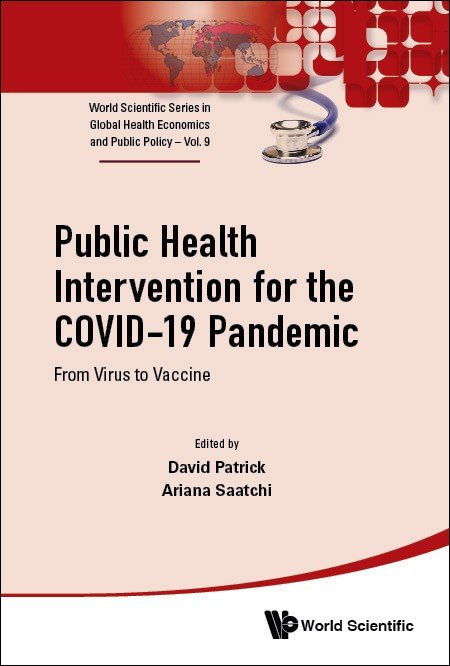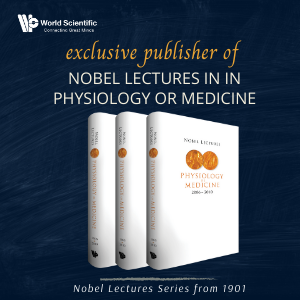System Upgrade on Tue, Oct 25th, 2022 at 2am (EDT)
Existing users will be able to log into the site and access content. However, E-commerce and registration of new users may not be available for up to 12 hours.For online purchase, please visit us again. Contact us at [email protected] for any enquiries.
On March 11, 2020 the World Health Organization declared the COVID-19 pandemic and life as we knew it paused indefinitely. Confusion, doubts and uncertainty became daily companions as the world watched the pandemic consume country after country.
At the University of British Columbia, Canada, a class of aspiring epidemiologists partnered with the professionals working at the frontline of COVID-19 healthcare and research, to examine key questions which would capture a snapshot of the historical pandemic.
What caused this outbreak? How does a virus spread? What are the best potential treatments; how did we achieve the development of vaccines, and how do they work? What are the strategies to tackle a two-front war against the virus and the spread of dangerous misinformation and pseudoscience? These questions and more are examined throughout this volume.
Sample Chapter(s)
Chapter 1: A Framework for COVID-19 Response
Contents:
- About the Editors
- About the Chapter Contributors and Series Editor
- Acknowledgements
- Introduction:
- A Framework for COVID-19 Response (Ali Okhowat)
- The Biological Underpinnings of Infection and Transmission:
- SARS-CoV-2: The Virus (Kishore Hari and Mel Krajden)
- Virus Meets Host: SARS-CoV-2 Pathogenesis (Cameron Geddes and James A Russell)
- Transmission Dynamics of COVID-19 (Samantha Bardwell and Daniel Coombs)
- Diagnostics and the Role of Laboratories:
- The Role of Nucleic Acid Amplification and Sequencing (Frederick Lam and Inna Sekirov)
- Antigen and Antibody Testing (Margaret Lin and Mohammad Morshed)
- Public Health Measures in the Community:
- Contact Tracing, Screening, Self-Isolation and Quarantine (Anne Lesack and Veronic Clair)
- Restrictions on Travel (Ali Okhowat, Bassel Bali, and Mark Lysyshyn)
- Non-Medical Masking, Hygiene and Social Distancing (Tina Cheng and Michael Brauer)
- Interventions in Healthcare:
- Hospital Infection Control (Andrea Simmonds and Titus Wong)
- Long-Term Care Facilities (Sana Vahidy and Michael Schwandt)
- Therapeutics:
- Therapeutics for COVID-19 (Jorge Andres Delgado-Ron, Reza Hosseini, Srinivas Murthy, and David Sweet)
- Vaccines:
- Overview of Vaccine Designs and Performance (Emma Ackermann and Manish Sadarangani)
- Vaccine Allocation and Prioritisation (Mara Balvers and Monika Naus)
- COVID-19 Vaccine Safety (Marian Orhierhor and Julie A. Bettinger)
- Public Engagement and Combating the Infodemic:
- Public Engagement (Tania Bubela, Katie Fenn, Sally Greenwood, Anne-Marie Nicol, Beverly Pomeroy, Harlan Pruden, Emily Rempel, and Alice Virani)
- Epilogue:
- Preventing the Next Pandemic (Ali Okhowat)
Index
Readership: Graduate and undergraduate students as well as practitioners in public health.
Part 2: The Biological Underpinnings of Infection and Transmission
Chapter 2: SARS-CoV-2: The Virus
- Pages:19–34
Part 3: Diagnostics and the Role of Laboratories
Chapter 5: The Role of Nucleic Acid Amplification and Sequencing
- Pages:79–97
Part 4: Public Health Measures in the Community
Chapter 7: Contact Tracing, Screening, Self-Isolation and Quarantine
- Pages:117–143
Part 8: Public Engagement and Combating the Infodemic
Chapter 16: Public Engagement
- Tania Bubela,
- Katie Fenn,
- Sally Greenwood,
- Anne-Marie Nicol,
- Beverly Pomeroy,
- Harlan Pruden,
- Emily Rempel, and
- Alice Virani
- Pages:337–367
Sample Chapter(s)
Chapter 1: A Framework for COVID-19 Response




